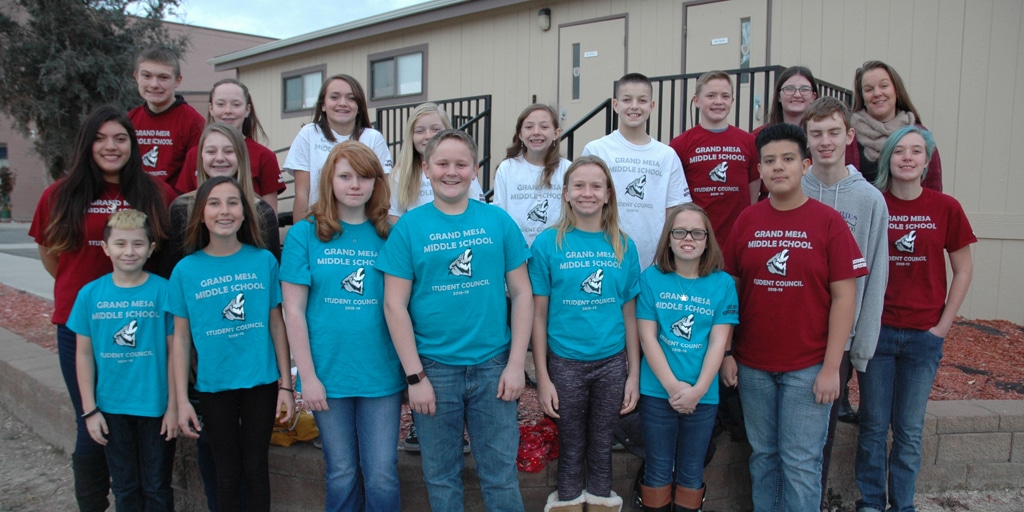
Students at Grand Mesa Middle School in Grand Junction, Colorado, are taking justice into their own hands – literally.
When a design challenge during last school year asked students to come up with a solution to a problem, student council members surveyed the student body to find out what the problems were that they could develop solutions around. They discovered that student drama – student-to-student conflict, bullying and many of the traditional troubles that folks think of when they think of middle school – was on everyone’s mind. Introduced to the idea of restorative justice circles in sixth grade through a reading of Touching Spirit Bear, student council members were eager to see if implementing something like this could work in their school.
“Being suspended doesn’t help anything,” says Bryce Davis, a seventh grader and student council vice president. “Other than just being punished, I think it’s important to help reduce conflict, help kids see the other side of the story. We want to make our school a better place.”
Restorative justice circles allow for students to ask questions and brainstorm solutions together with an aim of returning to the time before an incident occurred. Each student shares their perspective and is asked to consider how they were affected. What would need to happen for everyone involved to feel heard? How could the situation be resolved? What are ways that conflict could be avoided in the future?
“Restorative circles are important because they resolve conflict without violence,” says Carlos Gallegos, a seventh grader. “Kids can even become friends after the circles, because they understand why they got mad, or why something happened.”
Tara Niederkorn Serve, a teacher and student council sponsor, is excited about the role restorative circles can play in “making our school a place where students are kinder to each other.”
“Our job is not to punish, it’s about restoring things,” says Niederkorn Serve. “It’s a matter of allowing the student to know that their behavior affected other people, and how.”
Student council members have been practicing facilitating restorative circles with the goal of supporting their peers, though recently had their first “real” circle when one student pantsed another student and the two were brought into a practice session by a teacher. The two individuals involved were friends and it was only through the restorative circle that they recognized their actions had consequences for others, as well. Their peers in the hall, the teacher who witnessed the act, the contributions to the school climate, all were impacted by what felt like a harmless prank. For Brian Segers, student council president, this experience affirmed the fact that the circles are a “safe” place where students can talk through their issues and recognize the impact their actions have not only on their own experiences at school – but others’ experiences, as well.
“At that first real circle, we saw that it’s not just about two students apologizing to each other,” says Davis. “We helped them realize that.”
The student council has developed two referral forms for the restorative circles, one that administrators or school counselors can fill out for students and one that students can use themselves to self-refer. They’re also building out a bank of questions to ask during circles to ensure they’re getting at a variety of solutions that go beyond the students involved merely apologizing to each other, and to help prevent conflicts in the future. They’re also collecting data that they hope to share with other schools in the district with hopes to expand the program if the circles lead to fewer altercations between students.
Niederkorn Serve is excited to grow the program, but even more excited that the energy to do so is coming from her students.
“If students have a say in what their consequences are, the consequences are going to be more meaningful,” says Neiderkorn Serve. “If we can get a majority of students to stop and think about what they’re doing, to ask themselves to work this out with their peers or they’re going to have to go to the principal? It’s just putting that extra step in there. The more they see it in action and hear it from their peers, the more it’s seen as a better way to solve a problem.”
Students at R-5 high school, another Grand Junction school, have a passion for giving back to the community – and their learning just what a positive impact they can make.
This was written by former Senior Manager of Communications Jillian Kuhlmann.



